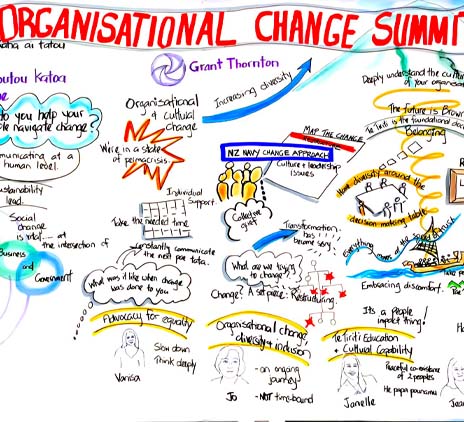Insights
Sustainable loans help the numbers stack up on green projects
Most Kiwi businesses are keen to reduce their carbon footprint – but the cost can be prohibitive. Unfortunately, the environmentally-friendly option isn’t always the cheapest. It would be wonderful to see the Government step in and provide affordable financing for decarbonising the business sector, because we know this could work. There is the GIDI fund, but this is typically for large projects ($300,000 plus) being undertaken by major manufacturers and processors. There isn’t much available for the vast number of small and medium enterprises that make up the majority of Kiwi businesses. Our major banks, though, have stepped up to provide some options. There are now sustainable lending products available to qualifying business borrowers of all sizes, with lower interest rates for projects that will improve your company’s sustainability and/or carbon footprint. These can be a win-win-win: they help your business cut emissions, support the bank’s own sustainability targets, and they improve national energy efficiency. 8 types of projects that are likely to qualify The major banks all offer sustainability-linked loans and while their criteria differ, these are typically the eight types of projects that will meet the eligibility criteria at some or all of those lenders: Energy efficiency improvements. Investment in products and technology that will reduce energy consumption, such as switching from incandescent or halogen lighting to LEDs. Green buildings. This might include installing a digital energy management system or retrofitting a more efficient heating and ventilation system. Waste minimisation. Adhering to the principals of a circular economy by designing out waste at every stage of a product’s life cycle. This might mean using more recycled materials in packaging for instance, or making the product more recyclable at end of life. A loan could fund new equipment or materials, or go towards changing the manufacturing process. Process heat. Typically converting boilers from coal or natural gas to a cleaner energy source such as biomass or electricity. Renewable energy. Generating green energy; usually installing solar panels. Clean transportation. Switching from internal combustion engine vehicles to fully electric vehicles (EVs). This could also include resources to make the change such as installing EV chargers. Sustainable land use. Restorative agriculture, forestry and fisheries. Sustainable water. Investing in ways to reduce the use of water in manufacturing processes or reducing contaminants reaching our waterways. Much like with mortgage lending, every bank has a slightly different approach, so it pays to research each lender’s criteria and terms before you apply for a loan. Set yourself up for borrowing success All the major banks have certain conditions for sustainable loans that go beyond the basic box-ticking. Again, this varies widely. But to give you the best chance of a ‘yes’ on your loan application, you should be ready for two additional homework projects. First, several banks want to see the impact the project will have on your company’s carbon emissions. Unless your business is sizeable, they won’t expect an independent audit of your emissions – this is not only expensive but there aren’t many people qualified to carry out this type of work. However, you can use a free calculator like Climate Toolbox and Cogo to give you a baseline carbon footprint, and then recalculate it to demonstrate to the bank how much difference your project will make. While not official, banks also understand frameworks like B Corp which shows you have done your homework and are making a serious attempt. The Climate Action Toolbox may also be helpful. These calculators won’t be perfect, but they will be enough to provide an estimate of the impact. Second, the bank may also want to see how your proposed project fits into your wider business strategy. What is the long-term vision for the business and how will improving sustainability help this? Are you aiming to attract new customers, retain market share, or boost the company’s resilience? If you’re applying for a loan, being able to show the bank how the project fits into your wider strategy will make you a much better lending proposition. How much could you save with a sustainable loan? Is it worth jumping through a few hoops at the bank to secure a sustainable loan? It might be. The typical saving could be between 0.5% and 1.5% on what your interest rate would otherwise be. That rate will be determined by your quality as a borrower. Let’s say you’re planning to borrow $800,000 to buy new EVs to replace your company cars, and you’re expecting to keep the EVs for three years. If the standard business loan you can secure is 12%, here’s how much difference a 1% interest rate discount could make: Loan amount Interest rate Total payment Total interest Difference $800,000 12% $956,572.12 $156,572 0 $800,000 11% $942,875.05 $142,875 -$13,697 That saving of roughly $13,700 is already significant, but if you then replace the EVs again on another loan, after 12 years you’ll have saved nearly $55,000. On a much smaller project, the savings are lower but still helpful. Say your standard loan rate is 13%, and you want to borrow $50,000 to install solar panels on your building. These last a while, so your term might be 5 years. Loan amount Interest rate Total payment Total interest Difference $50,000 13% $89,586.44 $16,733 0 $50,000 12% $86,082.57 $15,227 -$1,506 Once you add that $1,506 to the savings you’ll make on energy costs, the solar panels start to look like a better investment. Run the numbers and talk to someone who knows the market Sustainable loans are relatively new, so banks are still finding their feet on how to lend and who can borrow. Run the numbers and start thinking about whether your current bank is going to be on board with your project. For example, a push to electrify your fleet of company cars will meet the sustainability criteria for most banks. However, what about replacing older EVs with new EVs? This will not reduce your company’s carbon footprint, so is it an eligible project for a loan? Some major banks say yes, others say no. Talking to someone who understands the sustainable loan market will help you match your project to the best-fit lender. The more affordable funding available, the more quickly we can help decarbonise Aotearoa and reach our climate change targets – which is good news for everyone in New Zealand.


































